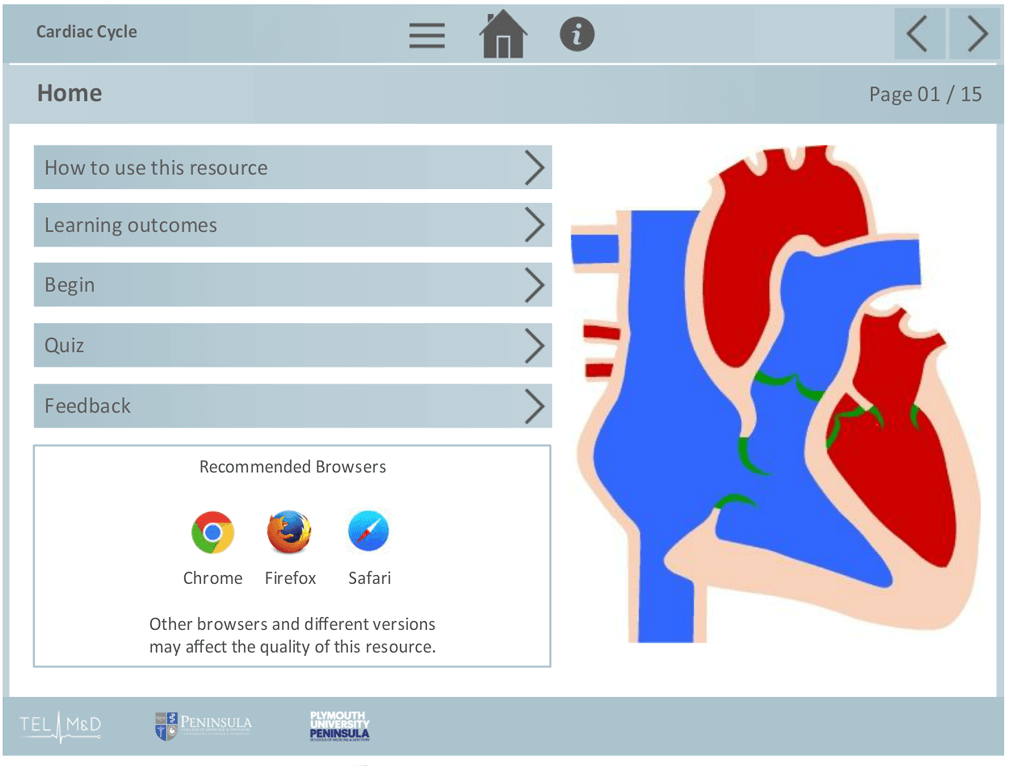-
Online discussion areas are widely used across all spectrums. For example, if you want to find out how to make a kite, or remove grout haze from ceramic tiles, an internet search for these things will inevitably direct you to at least one online community and an online discussion. They have been used to good effect…
-

Over the last few months we have been working together to create a new template design that we can pull all of our existing Reusable Learning Objects (RLO) into. Currently, all of the existing RLO’s have been made by different developers, old and new and by placement students and mostly in Flash, some even in…
-
Which tool should I use? Before deciding on whether to use Storyline or Lectora please read through this short document on the comparisons between the two. There is no outright winner between the two, platform has different strengths and weaknesses and choosing the best software really depends on your specific needs and technical capabilities. I’ve…
-
The term ‘Blended Learning’ certainly isn’t a new one and has been in common usage for some time now. Some of you may have heard the term and thought no more of it, and some of you may have decided that it isn’t for you, as you might feel face-to-face teaching is the best method. What is blended…
-

Wearable technology has been around longer than you think. It’s not all VR goggles and fitness bands. Early wearable technology was first seen in around 1966 with the invention of a device about the size of a cigarette packet that strapped to a wrist and measured the speed of a roulette wheel transmitting its predictions…
-
— This post was written by Tim Wheeler — I’ve been looking at Augmented Reality lately and how it can help give additional educational information without to much of the tech getting in the way. The majority of us have a phone that is internet connected and thats all you need to take advantage of…
-
We (TELMeD) have explored, developed and blogged about various gamification and GBL (Game Based Learning) projects recently and its probably the most challenging and fun part of the job (at least from my point of view!). But if your a newcomer reading this… what is gamification? To quote from a Lynda course I watched to…
-
— This post was written by Elizabeth Seymour — Here is a quick shortlist of some points you can implement for your eLearning tools to make them for interactive and more compelling for your learners: Explore Humans are naturally inquisitive, so you can entice your learners by inviting them to explore through your content, rather…
-
Following completion of a Lynda.com tutorial “ID Essentials:Adult Learners” I thought about creating this post to consolidate my learning and share with you. Adult Learning Principles There are a number of concepts and theories out there that tell us how adults learn best. A key point is that Adults MUST play an active role in their own learning…
-
You don’t have to create a fully fledged game for users to be able to engage and interact with an eLearning package. With a bit of creativity, its a pretty simple task to replicate the successes of games by including certain gaming elements. The following steps highlight areas that should be considered in any eLearning…
-
A good video can go a long way to helping someone learn a complex task or set of instructions. Think of something like origami. There are printed guides that show step by step, but its sometimes hard to put it in context of the piece of paper sat in front of you and its easy…
-
The following areas cover ways to best allow users to go take their own path through learning. As learning is not a linear process. Therefore, we shouldn’t create an eLearning package that is linear and dull. By allowing the user to decide, we can create various challenges and target a wider variety of experience levels.…
-
The following steps are not an exhaustive list of how to’s, but a good starting point to aim for when developing any eLearning package. If you can tick most of these then the eLearning package will be far more interesting to the end users and they will benefit more from it. Discovery Its important to…
-
Designing an eLearning package can be tricky. Especially when you first start out. You want to aim for a consistency across multiple packages so frequent users do not need to re-learn how to use something new each time. So its good to create a sort of template when starting, this will speed up future developments. By…
-
There are many ways to develop eLearning materials, but they all require you to follow general rules to make them effective and to fully engage the user. Todays eLearners are used to using highly polished games, websites, apps and operating systems (be in desktop or mobile). Visuals are very important, they ensure quality and increase…
-
— This post was written by Tim Wheeler — RECAP Repetition , exaggeration, chunking, association, pictures. Repetition Ever been told in school repeat after me, well teachers have known this for ever. Have you ever had an ear worm that just won’t go away, this is because of repetition, songs are made that way, having…
-
Knowledge can be conveyed in many ways, TELMeD specialise in electronic learning environments. However were not just techies! We pride ourselves in enabling our students to have a productive and successful learning experience by embedding proven learning theory’s and models into our work. When developing learning environments there are also various models for a team to work from, that make…
-
— This post was written by Elizabeth Seymour — The 6th November marks 42 days since the last case of Ebola in Sierra Leone – meaning the country can be officially declared Ebola-free. This is a massive achievement for the local health professional and communities, and eBuddi has been credited as playing a role in…
-
Over the summer PebblePad has had minor changes to make your experience easier and more intuitive. When you login to PebblePad you’ll now be greeted with a dashboard that lets you see: what you need to know; what you need to do; what you last worked on and some useful quick links. Pebble+, the place…
-
— This post was written by Elizabeth Seymour — How Object Oriented Programming (OOP) works Object Oriented Programming is a design philosophy or “paradigm” which is organized around reusable chunks of code called “objects” rather than a procedural list of instructions to be completed. OOP has four main concepts: Encapsulation – hiding data implementation by…


